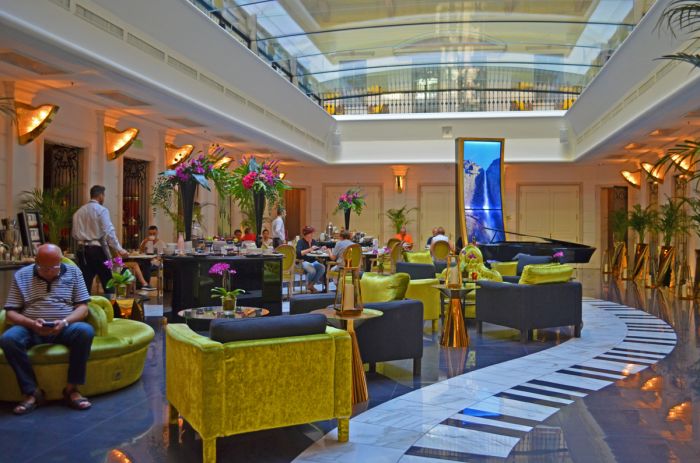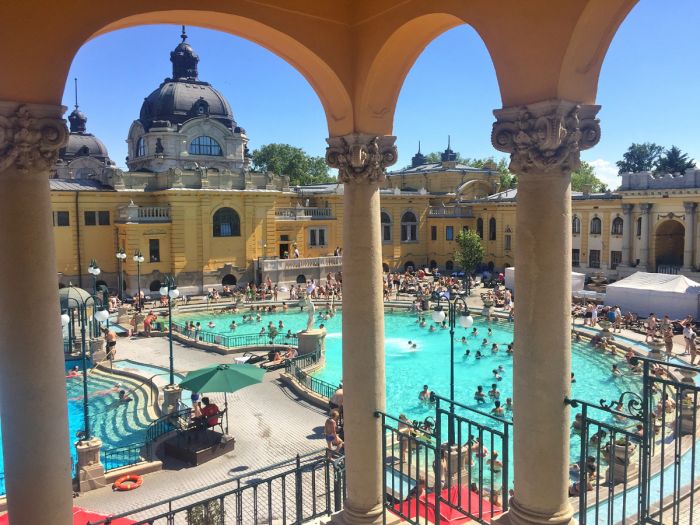Once a mecca for backpackers and budget travelers, the shinning gem on Hungary’s Danube River, is enjoying an explosion of the luxury market and a well-deserved reputation as one of the most beautiful cities and the second fastest-developing urban economy in Europe. Budapest is the result of an 1873 merger between two distinct cities with two very different personalities: Buda on the western bank of the Danube and Pest on the eastern bank. The two sides offer a slate of very different activities, from the iconic UNESCO World Heritage Sites in Buda to hip ruin bars in the Jewish Quarter of Pest. One thing they both have in common—the city can captivate for a weekend and beyond, and is best explored by a combination of foot and public transportation.
As a female solo traveler, I found Budapest to be among the best-of-the-best in safety, luxury, activities and gastronomy. In truth, part of the reason for my utter enjoyment of Budapest was due to the Goldilocks-like, just-right-attention from JayWay Travel. JayWay custom caters to each traveler’s preferences, from adventure to luxury and everything in between – a perfect fit for my inclination to combine tours with my own exploration during the day and relax in luxury at night. Here are recommendations for the solo traveler to have a fantastic all-around experience in Budapest.

Stay in the Aria Hotel
There are a variety of hotels available with JayWay, but if you want luxury, look no further than the Aria Hotel, a stylish musical-themed boutique hotel with the feel of a great Hungarian palace. The hotel has four wings, each one impeccably designed to honor a genre—classical, contemporary, jazz and opera. Each room has a wall-sized composer caricature and amenities such as fireplaces, views and sitting rooms. The grand foyer sits under a massive glass ceiling with a grand piano and keyboard walkway. There is a spa, and a rooftop bar with expansive views of the city. Perhaps best of all, the hotel is perfectly located adjacent to St. Stephen's Basilica square, festive and safe any time of day, and close to a selection of good restaurants.

Walk in Buda
Arguably, there is no better sightseeing in Budapest than walking along the medieval cobblestone streets of Castle Hill. I’m about as independent as they come, but to get the most out of this area, I enlisted one of JayWay’s private tour guides, and it was a great decision. Betti was a treasure trove of information, history, and fun stories which I otherwise would not have known.
It was a beautiful, sunny day, so we chose to walk up to Castle Hill, but there’s also a funicular near the Chain Bridge. The castle dates back to the13th century, when citizens sought refuge after the Mongolian invasion. The area enjoyed a golden age through the 15th century until Budapest was occupied by the Turks and much of the architecture was destroyed. Subsequently, the city was rebuilt in the stunning Baroque style that remains today as a UNESCO World Heritage Site. Castle Hill is also an elite residential area, with houses that date back as far as the 14th century.
Some sights in Castle Hill not be missed include Trinity Square, Matthias Church—one of the finest examples of 13th century Gothic architecture, and Fishermen’s Bastion—an ornate, multi-terraced structure with dramatic panoramic views across the Danube to Pest.

Shop in Pest
There is no shortage of markets in the city, but the mother of them all is the Great Market Hall next to the Danube on the Pest side. It’s sometimes called Central Market Hall due to the five-minute walk from the city center. All manner of goods are sold in this gigantic three-story warehouse. Edible fare is lined up, row upon row of sausages, fresh breads, cheeses, vegetables and Hungarian paprika. It’s also the best place to find souvenirs, from inexpensive kitsch to pricey embroidery. Do try the traditional Hungarian pastry, langos—deep fried dough bigger than your head heaped with cheese and garlic.
After you’ve had your fill of shopping (and eating!), be sure to see the other sights in Pest, like St. Stephen's Basilica containing the alleged mummified hand of the saint, Heroes Square, the Hungarian State Opera House, and stroll along beautiful Andrássy Avenue.

Go on a Sunset Cruise
After a full day of sightseeing, I really enjoyed relaxing, complimentary glass of champagne in hand, on a romantic cruise down the Danube, dividing the city into Buda and Pest. We began while it was still daylight and started the glide past the best of the riverfront beauties of Budapest. Our vessel slid under the 19th-century Chain Bridge and five other bridges. We watched the sun go down behind Buda Castle Hill with its enchanting castles and churches lined up on the bank. As night fell, the magnificent sight of the lit Hungarian Parliament was memorizing, with the clubs and bars of Pest as a backdrop.

Soak in the Thermal Baths
Because Budapest was built over a network of almost 125 thermal springs, ‘taking the waters’ has been a pastime since the time of the Romans. Whether you are seeking a cure, relaxation, or like me—just plain old fun, there are two dozen thermal baths to suit every taste. One such thermal spa is indeed the largest medicinal bath in Europe. Built in 1923, the Széchenyi Baths is a sprawling, festive neo-baroque palace with 15 indoor thermal pools ranging from lukewarm to borderline unbearably hot, three impressive outdoor pools, fountains, steam rooms and a spa.

Try the Goulash
Hungarian goulash is without a doubt the most famous dish of Hungary, and perhaps even Eastern Europe. But don’t let that stop you from trying it. While goulash may be considered a melting pot entree of the continent, in my opinion the Hungarian/Magyar version is much better than that found in Romania or the Czech Republic. It’s more savory, has more paprika spice, and is not so thick, making it more of a soup than the stew you’ll find in other countries. It’s a peasant-style comfort food, with generous chunks of beef, potatoes and vegetables.

Stroll Under the Chain Bridge at Night
Crossing the width of the Danube, the Chain Bridge was the first permanent stone-bridge connecting Pest and Buda and the most famous of many bridges in the city. The name comes from the iron chains connected by large rivets making it a real moving chain. The bridge features stone lions standing sentry at each side. The nighttime illumination is brilliant (pun intended). The pillars are lit by reflectors, and light runs along the top chains to accentuate the shape of the bridge.
Explore the Ruin Bars
The name alone intrigued me to find out what it’s all about. Located in the old Jewish Quarter, the quirky pubs are essentially abandoned buildings and unused outdoor spaces, providing cheap beer, music and sometimes a limited menu. A glance behind the doors reveals unsuspected creativity and ingenuity. The décor is distinctly eclectic—even chaotic—with mismatched furniture, bizarre sculptures and offbeat artwork. Despite the trendy, hipster feel, the ruin bars are frequented by locals and tourists of all ages.















